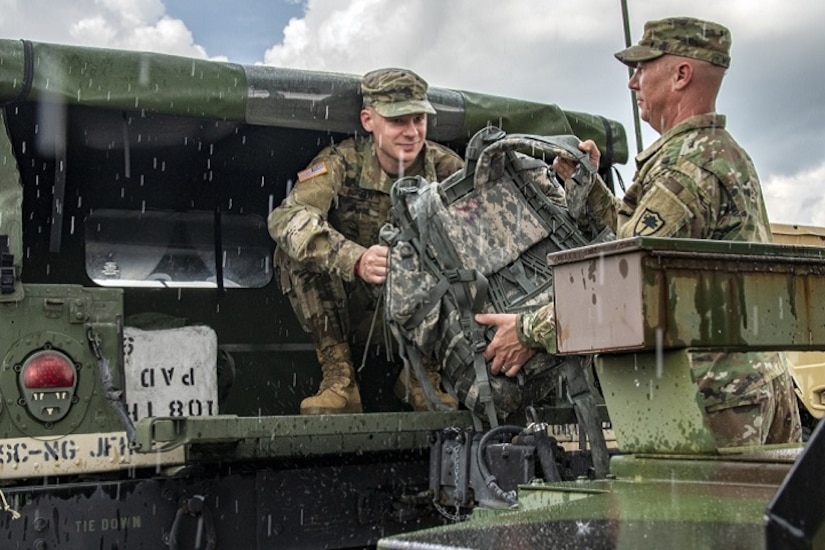By Army Staff Sgt. Neysa Canfield, 2nd Brigade Combat Team,
4th Infantry Division
KANDAHAR AIR FIELD, Afghanistan -- As the medical provider
here, Army Capt. Jennifer Hawkins works closely with enlisted health care
specialists to ensure service members throughout Kandahar Air Field receive
proper medical care.
However, unlike for most officers, this is familiar and
comfortable territory for Hawkins. The soldier from 1st Battalion, 12th
Infantry Regiment, wears the evidence on her right front pocket; the Army Drill
Sergeant Identification Badge.
“When I became a drill sergeant, for me that’s when I really
learned how to be a leader,” she said. “Breaking down a civilian and turning
them into a soldier and understanding what it takes to do that, was a learning
experience. There is not a single thing a soldier can present to me at this
point in my career that will surprise me.”
Hawkins began her Army journey as a practical nursing
specialist. She enlisted in October 1998 after graduating from Lake Havasu City
High School in Arizona.
“My first assignment was at Fort Sam Houston [Texas] at a
critical care unit, and I think that’s where my love of medicine first
started,” Hawkins said. “I was promoted to the rank of sergeant within two
years of being in the military, and I just kept climbing up the ranks very
quickly.”
Drill Sergeant
As a 25-year-old staff sergeant, Hawkins was selected to go
to the U.S. Army Drill Sergeant School.
“Although I was afraid and, in my mind, not ready to be a
drill sergeant, it’s what made me the leader I am today,” she said. “If I
could, I would go back and do it all over again.”
After serving her time shaping civilians into soldiers,
Hawkins was promoted to sergeant first class and continued to challenge and
improve herself by earning her associate and bachelor’s degrees.
“At this point I thought to myself, ‘Well, what’s next?’ and
then I heard about the physician assistant program for the Army and became
interested,” she said. “However, once again I was afraid and pushed away from
it when I heard people talking about how difficult the school was and how low
the passing rate was.”
Hawkins’ battalion sergeant major persuaded her to apply for
a direct commissioning board.
“I decided to do it and applied in October of 2009,” she
said. “In February of 2010 the master sergeant list was released and I had been
selected for promotion, a month or so later the board results came out, and out
of 500 applicants, five were selected, and I was one of them.”
Decision Time
At 11 years in the military, Hawkins had an important
decision to make.
“The day I raised my hand and I was no longer a [sergeant
first class] promotable and was now a second lieutenant, I cried because I felt
like an NCO through and through and now I was leaving it,” said Hawkins. “It
was a very hard decision leaving the NCO corps but the experience is something
I will always take with me.”
With the knowledge Hawkins holds, many superiors view her as
an example of an experienced and extraordinary leader.
“Capt. Hawkins is a team player and she inspires senior
[officers] like myself because she is all about the mission and putting her
soldiers above herself,” said Navy Capt. Cynthia J. Gantt, commander of the
Kandahar Air Field NATO Role III Multinational Medical Unit.
Hawkins and her team enhance the capabilities of the
hospital, with Hawkins being the primary reason for that, Gantt said.
“She brings invaluable experience, particularly to the
officers who have never had the honor or privilege of being enlisted,” she
said. “She is able to coach and mentor us on how to better partner with our
enlisted members to be able to provide better care for our patients.”
As Gantt and her team of sailors near their end of time in
country, she said she is thankful for the opportunity to meet someone such as
Hawkins and privileged to have had her as part of the team.
“We have some very highly trained surgeons and doctors in
our team but we have definitely learned so much from Capt. Hawkins and her team
that we will be able to take with us throughout the years,” she said. “Without
a doubt I would work for Capt. Hawkins any day.”
Hawkins said she attributes her success to her experience as
an enlisted soldier.
“I believe that having the experience of being in the shoes
of a private, a junior NCO and a senior NCO have made me a better officer,” she
said. “My priority will always be my soldiers, because at the end of the day a
leader is a leader regardless of what you wear on your chest.”










